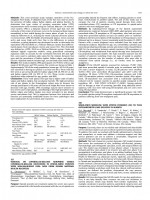Download
| File Size | 54.0 KiB |
|---|---|
| Date | November 2, 2015 |
| Downloads | 1 |
| Author | D A Marshall, S Vanderby, C Frank, E Enns, N Kulin, T Wasyluk, D Mosher, T Noseworthy, P Rogers, C Maxwell, T Rohleder, K Pkyerman, M Carter |
Purpose: Currently, there are no reliable and validated tools that health service decision-makers can use to inform system level policy decisions. To address this need, we worked with health administrators, clinicians and researchers to create and validate a decision-support tool that service planners can use to achieve a sustainable, integrated care system for hip and knee osteoarthritis (OA).
Methods: The tool is based on a system dynamics (SD) model of patient flow across the continuum of care, including self-directed, primary, rheumatologic and orthopaedic specialist, acute, and surgical follow-up care. The model was developed in four phases: phase 1 focused on demand and flow rates, phase 2 on resource use and costs, phase 3 on geographical stratification, and phase 4 on adding feedback loops. We populated the model with data from several sources, including Alberta Health & Wellness (e.g. physician claims, inpatient, and ambulatory data), Statistics Canada (e.g. the Survey of Living with Chronic Diseases in Canada and population projections), and the Alberta Bone and Joint Health Institute (clinical/surgical data). Using established principles of SD modeling and an iterative, integrated knowledge translation process involving multiple workshops with front-line clinical staff and administrators, we defined the problem, determined the care process, modeled the system as a series of stock and flows, tested, validated and calibrated the model.
Results: We have developed the full SD model, for two key applications. First, it can help identify flow, resource use and cost variations in current practice, which may benefit from further exploration. For example, variations in practice patterns, particularly surgery rates and resource use, were observed among the health zones reflecting regional differences. Second, it can be used to explore the effects of various ‘what if’ scenarios that can demonstrate system wide and long-term effects that may result from changes in care processes. For example, two scenarios examined were: “What would happen if 1) primary care providers could manage more patients medically, ultimately referring fewer patients to specialists; and 2) primary care providers in all health zones adopted one zone's rheumatologist referral patterns for OA patients?” Such scenarios change the pathways through which simulated patients flow, the results of which can provide insight into intended and unintended effects on resource use and costs across the continuum of care over a lengthy time horizon.
Conclusions: Our SD model can be used as a decision-support tool to estimate changes in health care demands, resource requirements and costs over time and as a result of ‘what if’ scenarios. It is critically important to involve clinicians and decision-makers in the development of such tools to ensure they are appropriate representations of the system and to facilitate their adoption and continued use to inform decision making.
Methods: The tool is based on a system dynamics (SD) model of patient flow across the continuum of care, including self-directed, primary, rheumatologic and orthopaedic specialist, acute, and surgical follow-up care. The model was developed in four phases: phase 1 focused on demand and flow rates, phase 2 on resource use and costs, phase 3 on geographical stratification, and phase 4 on adding feedback loops. We populated the model with data from several sources, including Alberta Health & Wellness (e.g. physician claims, inpatient, and ambulatory data), Statistics Canada (e.g. the Survey of Living with Chronic Diseases in Canada and population projections), and the Alberta Bone and Joint Health Institute (clinical/surgical data). Using established principles of SD modeling and an iterative, integrated knowledge translation process involving multiple workshops with front-line clinical staff and administrators, we defined the problem, determined the care process, modeled the system as a series of stock and flows, tested, validated and calibrated the model.
Results: We have developed the full SD model, for two key applications. First, it can help identify flow, resource use and cost variations in current practice, which may benefit from further exploration. For example, variations in practice patterns, particularly surgery rates and resource use, were observed among the health zones reflecting regional differences. Second, it can be used to explore the effects of various ‘what if’ scenarios that can demonstrate system wide and long-term effects that may result from changes in care processes. For example, two scenarios examined were: “What would happen if 1) primary care providers could manage more patients medically, ultimately referring fewer patients to specialists; and 2) primary care providers in all health zones adopted one zone's rheumatologist referral patterns for OA patients?” Such scenarios change the pathways through which simulated patients flow, the results of which can provide insight into intended and unintended effects on resource use and costs across the continuum of care over a lengthy time horizon.
Conclusions: Our SD model can be used as a decision-support tool to estimate changes in health care demands, resource requirements and costs over time and as a result of ‘what if’ scenarios. It is critically important to involve clinicians and decision-makers in the development of such tools to ensure they are appropriate representations of the system and to facilitate their adoption and continued use to inform decision making.



